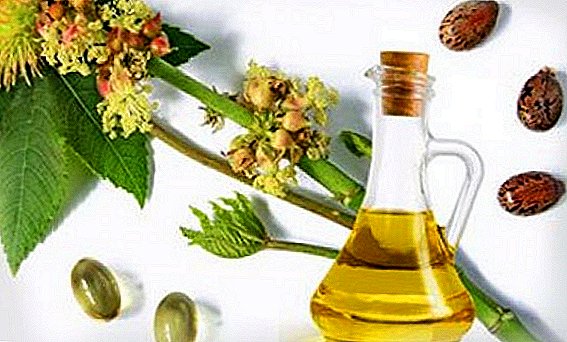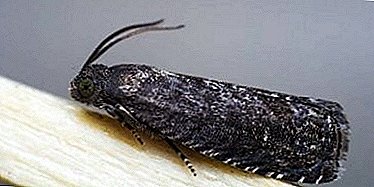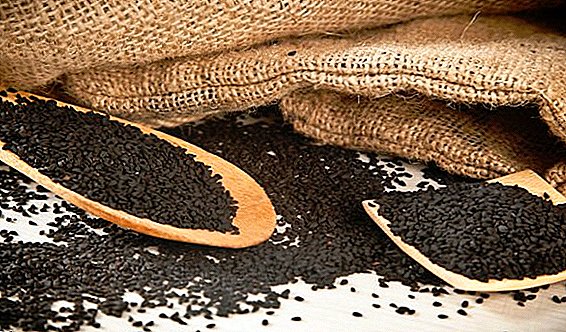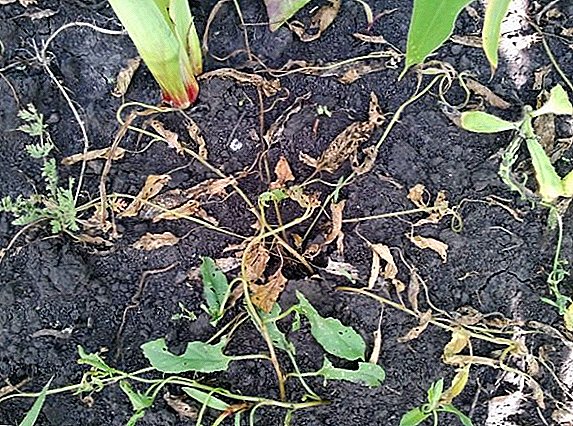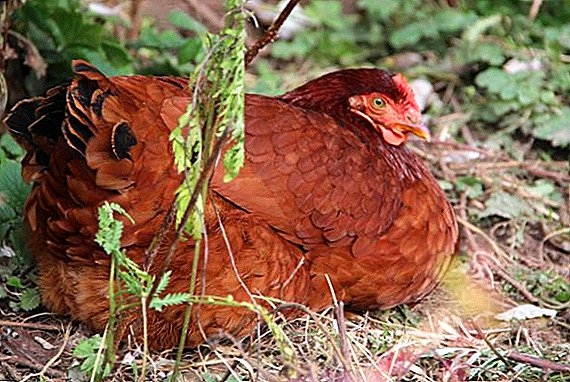 In the process of rearing birds, one can sometimes encounter such disturbing symptoms as coughing and sneezing. Other breathing disorders may also occur, such as heavy breathing, various wheezing. Ignoring these symptoms can result in the death of a bird and the loss of a significant part of the population. Therefore, it is important to know what diseases can give such a clinical picture, and what to do to combat illnesses.
In the process of rearing birds, one can sometimes encounter such disturbing symptoms as coughing and sneezing. Other breathing disorders may also occur, such as heavy breathing, various wheezing. Ignoring these symptoms can result in the death of a bird and the loss of a significant part of the population. Therefore, it is important to know what diseases can give such a clinical picture, and what to do to combat illnesses.
Why chickens sneeze and wheeze
The cause of coughing, wheezing and sneezing can be both non-communicable diseases and infections of various origins. 
Symptoms are usually not limited to respiratory disorders and include a number of other manifestations:
- discharge from the nasal passages, eyes;
- stool disorders (diarrhea);
- loss of appetite;
- apathy, inactivity, lethargy;
- decrease in productivity, live weight;
- overall deterioration in appearance.
Important! Often, without proper treatment, the infection progresses, and the sick individual spreads it, infecting other birds. Without treatment, a significant proportion of chickens may die.
Sneezing chickens
Chickens have a weaker immune system than adult chickens, especially for broiler species, which as a result of breeding received very weak immune protection and increased sensitivity to environmental conditions. Sneezing in chickens can be a sign of both a common cold and a deadly infection. If you notice this symptom, first of all, analyze the conditions of detention.  It is possible that there are drafts or cracks in the hen house, humidity is increased, the temperature is not high enough (which is extremely important for broiler chickens!). For prophylactic purposes, the chickens can be given the Baitril veterinary medicine. Dilute the drug in water in the proportion of 1 ml of the drug per 1 liter, to drink from the second to the fifth day after birth. To improve immunity, you can drink a solution of the drug "Trivit" (6 drops of the drug for 1 l of water).
It is possible that there are drafts or cracks in the hen house, humidity is increased, the temperature is not high enough (which is extremely important for broiler chickens!). For prophylactic purposes, the chickens can be given the Baitril veterinary medicine. Dilute the drug in water in the proportion of 1 ml of the drug per 1 liter, to drink from the second to the fifth day after birth. To improve immunity, you can drink a solution of the drug "Trivit" (6 drops of the drug for 1 l of water).
If coughing and sneezing are complemented by other symptoms, try using broad-spectrum antibiotics - Tetracycline or Levomycetin. In 1 liter of water you need to dilute the powder 1 tablet, water for 4 days. Common causes of coughing in young are colds, bronchitis, mycoplasmosis, pneumonia, and colibacillosis. These diseases are also found in adults. On the specifics of these ailments, methods of treatment and prevention talk later.
Learn how and how to treat non-infectious and infectious diseases of chickens.
Possible diseases and treatment
As you may have guessed, many ailments can manifest sneezing and coughing, so you need to pay attention to other symptoms to determine the cause of the disease state. If possible, it is advisable to consult a veterinarian.
Cold
This is one of the most common causes of coughing and sneezing. At first glance, this is a harmless and harmless disease, but the catch is that, without proper treatment, the common cold can cause serious complications. The cause of the disease becomes overcooling of birds as a result of walking at low temperatures, dampness and chinks in the house, poor heating or its complete absence in winter.  In addition to coughing, the common cold is accompanied by the discharge of mucus from the nose, constantly open beak, loss of appetite, heavy breathing and various sounds in the process: whistling, wheezing, bubbling. The bird moves a little, usually clogs up in a corner.
In addition to coughing, the common cold is accompanied by the discharge of mucus from the nose, constantly open beak, loss of appetite, heavy breathing and various sounds in the process: whistling, wheezing, bubbling. The bird moves a little, usually clogs up in a corner.
Important! If possible, sick individuals should be removed from the rest of the population. Quarantine should continue throughout the treatment period. The room for the period of quarantine should be warm and dry. At the same time, the main house should be disinfected and cleaned.
Treatment and Prevention
Therapy of the disease is reduced to such measures:
- With prolonged colds, antibiotics are used: "Erythromycin" (40 mg per 1 kg of live weight), "Tetracycline" (5 mg per 1 kg of live weight). Antibiotic treatment lasts 7 days.
- With a lighter course or at the beginning of the disease, you can try to fight the disease with herbal decoctions of nettle leaves, currants, raspberries and lindens. They can also be given for prophylaxis. For cooking broth 5 tbsp. l Raw materials are poured over 1 liter of hot water and infused in a water bath for 30 minutes. Broth give klusham instead of water for 3-4 days.
- The coop needs to be thoroughly cleaned and washed, including all troughs and troughs.
- Eucalyptus aroma lamps can be used as an auxiliary method.
 "Erythromycin" The main preventive measure is the prevention of overcooling of birds. To do this, you should competently equip the chicken coop, monitor the temperature (it should not be below +15 ° C), and if necessary, warm the walls and floor. It is necessary to eliminate drafts, at the same time airing is obligatory.
"Erythromycin" The main preventive measure is the prevention of overcooling of birds. To do this, you should competently equip the chicken coop, monitor the temperature (it should not be below +15 ° C), and if necessary, warm the walls and floor. It is necessary to eliminate drafts, at the same time airing is obligatory.Laryngotracheitis
Laryngotracheitis is a viral infectious disease that affects the respiratory tract. It appears most often in chickens aged 2-4 months. For a person, the disease is not dangerous, you can also eat eggs from infected hens. The virus is very quickly transmitted from the sick individual to everything else, while having recovered or even vaccinated chicken develops immunity, but remains for life the carrier of viral agents and can infect others.
The disease can be acute, subacute and chronic. Accordingly, the mortality is 80%, 20% and 1-2% for each form. Outbreaks of the disease are most often observed in the autumn-spring period. Additional factors provoking the disease are the staleness and dustiness of the house, a poor diet, excessive moisture. To establish the disease, it is necessary to examine the larynx of a sick individual - on the organ one can notice hyperemia and edema, mucus and cheesy discharge.  Sometimes the eyes may be affected with the development of conjunctivitis, which often threatens blindness. In case of ocular form, coughing and sneezing may be absent. It is very important to differentiate this disease from other infectious diseases: bronchitis, pasteurellosis, mycoplasmosis.
Sometimes the eyes may be affected with the development of conjunctivitis, which often threatens blindness. In case of ocular form, coughing and sneezing may be absent. It is very important to differentiate this disease from other infectious diseases: bronchitis, pasteurellosis, mycoplasmosis.
Treatment and Prevention
Unfortunately, in some cases, it is recommended to take an extreme measure - send all livestock for slaughter and, after thorough disinfection of the premises (chlorospidar), start a new one. If this option is unacceptable, it is necessary to reject the most weakened and depleted birds, and for the rest to carry out such therapy:
- Initially, broad-spectrum antibiotics are used: tetracycline drugs, fluoroquinolones. On the basis of "Ciprofloxacin" prepare a solution (175 mg per 1 liter of water) and adult individuals are sucked out for 7 days. "Furazolidone" is added to the feed in the proportion of 8 g per 10 kg of food, the course of treatment lasts 7 days.
- Vitamin preparations can be added to the main feed. "Aminovital" can be added once to feed or water at the rate of 4 ml of the preparation per 10 liters of water. You can also add the drug "ASD-2" (3 ml per feed volume for 100 individuals) to the feed or water. Vitamin therapy is carried out for 5-7 days.
 "Furazolidone" To prevent an outbreak of the disease on the site, you need to monitor the health of new chickens hooked to the population. You can also do vaccination, but there is one important point to consider. The vaccinated individual is also contagious for all birds, as well as the sick. Therefore, once having vaccinated livestock, you have to do it all the time!
"Furazolidone" To prevent an outbreak of the disease on the site, you need to monitor the health of new chickens hooked to the population. You can also do vaccination, but there is one important point to consider. The vaccinated individual is also contagious for all birds, as well as the sick. Therefore, once having vaccinated livestock, you have to do it all the time!Did you know? During the Iraq war, American soldiers used chickens as an identifier for chemical contamination of air. The fact is that the birds' respiratory system is much weaker and more sensitive than that of a human, so the hearts became the first victims of chemical preparations. The miners did the same when they went underground, only canaries were used instead of chickens.
Rhinotracheitis
This is a serious viral disease affecting not only the respiratory organs, but also the sexual and central nervous systems of birds. The virus is transmitted by airborne droplets, spreading like lightning throughout the population. Chicken of any age and breed are susceptible to rhinotracheitis.
In the most severe cases, a bacterial infection can occur, which causes a swollen head syndrome. In this situation, the clinical picture is complemented by the following symptoms: eye inflammation, damage to the oviduct and skull. Mortality in the advanced stage of the disease is very high. 
Treatment and Prevention
At the moment there is no specific therapy against this pathogen. In order to prevent the infection of birds, it is necessary to carefully follow the sanitary standards of chickens and vaccinate the livestock in a timely manner. The causative agent of infection, metapneumovirus, quickly dies in the external environment, especially under the influence of disinfectants, so regular cleaning and maintaining cleanliness in the house significantly reduces the risk of outbreaks of infection.
Vaccination is carried out on day old chicks, once for broiler breeds and twice for laying hens. The most effective method of vaccination is spraying a live vaccine for its direct entry into the respiratory tract. It should be borne in mind that over time the effectiveness of the vaccine decreases.
Read also about how to treat infectious bronchitis in chickens.
Infectious bronchitis
Very contagious infectious disease, the causative agent of which is miksovirus. It mainly affects chicks up to 30 days old and young animals aged 5-6 months. When infecting one individual, it spreads extremely rapidly throughout the population. Infectious bronchitis causes significant economic damage.  The main carriers of the disease are sick and sick for 3 months bird. The disease may be manifested by a symptom of lesions of the reproductive organs and the nephrosis-nephritis syndrome.
The main carriers of the disease are sick and sick for 3 months bird. The disease may be manifested by a symptom of lesions of the reproductive organs and the nephrosis-nephritis syndrome.
Important! If the laying hen has had been ill with infectious bronchitis at the beginning of the productive age, its egg production is reduced to 20–30% and is no longer restored throughout life. If the chicken is sick, it will be far behind in development.
Treatment and Prevention
With this disease, there is also no specific treatment. Patients are protected from the rest of the herd, and the house is thoroughly disinfected with such substances: chlorine asparine, iodine monochloride with aluminum, "Lyugol", "Virtex", etc. If most of the livestock are infected, it makes sense to think about the slaughter of the bird and the formation of a new herd, so how bronchitis becomes chronic and cannot be treated.
For the prevention of disease, live and inactivated vaccines are used. It is very important that for a few months the farm in which the outbreak of bronchitis occurred stopped the supply of chickens, hatching eggs and chickens.
Video: infectious bronchitis
Bronchopneumonia
Bronchial pneumonia is another common cause of coughing and sneezing. The disease can result from pneumonia, after a cold or infectious bronchitis. It can occur in mild, moderate and severe forms. Often the cause of bronchopneumonia becomes a banal hypothermia - a long stay in the cold, in the rain, living in a cold coop, especially if there are drafts.
Most often the disease is diagnosed in chickens aged 14-20 days. This disease causes significant damage to the farm because the disease in the poultry disrupts the development of the ovaries and oviduct, which has a very negative effect on productivity. 
Treatment and Prevention
The procedure for bronchopneumonia is not much different from that in other diseases of birds. Individuals with a pronounced clinical picture are immediately isolated from the rest, the house is treated with a disinfectant solution. Be sure to thoroughly wash and process the feeders and drinkers.
You can drink the klush with antibiotics. For example, the good result is given by the veterinary medicine "Norfloxacin-200". The drug is added to water at the rate of 0.5 ml per 1 liter of water, and the klush is drunk for 5 days.
Also find out how to determine the disease of mycoplasmosis in chickens.
Be sure to take preventive measures:
- provide separate keeping of young and adult chickens;
- eliminate dampness, drafts in the house, warm the walls and floor;
- be sure to provide livestock with vitamins and minerals;
- to vaccinate against bronchopneumonia.
Mycoplasmosis
Respiratory mycoplasmosis in chickens is a very common bacterial infection. It often occurs in conjunction with other bacterial and viral diseases, and may have acute and chronic forms. You can become infected by airborne droplets, as well as a sick wedge infects eggs.  The disease spreads quickly throughout the population, for 2-3 weeks the whole herd is infected, and even after recovery, the birds are a source of infection for a long time, as they continue to secrete bacilli. In addition to wheezing and shortness of breath, swelling of the eyelids can be observed, appetite, weight and egg production are standardly reduced.
The disease spreads quickly throughout the population, for 2-3 weeks the whole herd is infected, and even after recovery, the birds are a source of infection for a long time, as they continue to secrete bacilli. In addition to wheezing and shortness of breath, swelling of the eyelids can be observed, appetite, weight and egg production are standardly reduced.
Did you know? There is an opinion that the first chickens, domesticated about 7 thousand years ago, were used not for human consumption, but for cock-fighting. Today, this entertainment is illegal, although clandestinely very common and often closely associated with the drug trade and gambling.In some cases, the oviduct may be inflamed, and the hatchability of eggs in such layers decreases. In adults, mortality reaches 4-10%, in chickens it is twice as high, especially in broilers - up to 30%. Mycoplasmosis is often supplemented by colibacteriosis. It is important to differentiate this infection from bronchitis, pneumonia and hemophilia.
Video: Mycoplasmosis in chickens
Treatment and Prevention
Features of treatment depend on the number of diseased chickens, as well as the accuracy of the established diagnosis. If it is definitely known that the cause of respiratory symptoms is mycoplasma, antibiotics based on enrofloxacin, tylosin, tiamulin can be used. Drugs are diluted in water in the right proportion and soldered instead of ordinary water.
The course of therapy lasts up to 5 days:
- "Enrofloks" (0.5-1 ml per 1 liter of water). Feeding is carried out for three days.
- "Pneumotil" (0.3 ml per 1 l of water). Feeding takes 3-5 days.
 "Enrofloks"
"Enrofloks"To do this, you can use:
- "Farmazin-50" (0.2 ml per 1 kg of live weight). Injections are carried out once a day for 3-5 days.
- "Tialong" (0.1 ml per 1 kg of live weight). Injections are administered once a day for 3 days.
- Tylosin-50 (0.1 ml per 1 kg of mass). Injections are carried out once a day for 5-7 days. Each time it is necessary to introduce the solution in a new place on the skin.
If it is not possible to determine the exact pathogen, it makes sense to use broad-spectrum antibiotics:
- Tilodox. The drug is added to water in the proportion of 1 g per 1 liter. Feeding is carried out for 3-5 days.
- "Tilokol". The drug is added to the feed at the rate of 4 g per 1 kg, the duration of treatment is 3-7 days.
- "Macrodox". The drug can be added to feed or water at the rate of 0.5-1 g per 1 liter of water or 1 kg of feed. The treatment lasts 3-5 days.
 "Ecocide"
"Ecocide"There is a vaccine against mycoplasmosis, but it gives a weak immunity and can cause an outbreak of the disease. Therefore, it is more effective to prevent the disease by providing optimal conditions for the birds. In no case should crowding in poultry houses be allowed, be sure to air and clean the premises regularly. The bird must be kept warm, dry and full.
Colibacteriosis
Colibacteriosis is another bacterial infection that can cause respiratory symptoms in the form of coughing, sneezing. The causative agent is E. coli Escherichia coli (Escherichia coli), which is contained in the feathering litter. The disease affects mainly chickens, spreads very quickly through the herd by airborne droplets, through food and water, and when it gets into the feces, the eggs become infected.
In most cases, the cause of outbreaks of infection are unsanitary conditions of birds (rare change of litter or clearing of litter, stuffiness, overcrowding).  Less commonly, infection is transmitted from hidden carriers, poor-quality food, or contaminated water. In young animals, the disease is acute, in adults it almost always turns into a protracted form. In colibacteriosis, respiratory symptoms are far from the only ones.The clinical picture includes such manifestations:
Less commonly, infection is transmitted from hidden carriers, poor-quality food, or contaminated water. In young animals, the disease is acute, in adults it almost always turns into a protracted form. In colibacteriosis, respiratory symptoms are far from the only ones.The clinical picture includes such manifestations:
- the blueness of the beak;
- increased thirst, lack of appetite;
- diarrhea, contamination of the anus with feces;
- autopsy reveals damage to the heart, liver, swollen head syndrome.
Read also about how to treat colibacillosis.
Treatment and Prevention
When most of the livestock is infected, the treatment is not carried out, but if several individuals are affected, you can try to save them with antibiotics:
- "Sintomitsin" - added 5 g per serving of feed for one bird. The course of treatment lasts 5-6 days.
- "Furazolidone" - mixed with a portion of food per wedge in the amount of 2-3 g, the treatment lasts 10 days.
Important! Meat of dead or slaughtered birds is prohibited! Carcasses are either burnt or used to make meat and bone meal.To prevent colibacillosis, one should strictly adhere to sanitary standards when keeping birds. Regular cleaning of the litter, treatment of the premises with disinfectants, quarantine for new individuals, treatment of hatching eggs - these simple measures will help prevent the risk of outbreaks of infection.

Tuberculosis
A very dangerous infectious disease that is transmitted through the droppings of infected individuals or through infected hatching eggs. The most susceptible to disease are chickens of 3 years of age. Air is rarely transmitted. When the bacilli enters the body, the formation of tubercles (tubercles) occurs, the liver is affected. With airborne transmission of the virus, the lungs are affected, and the infection is spread throughout the body through the bloodstream.
The incubation period is long: from 2 months to a year. In this case, the symptoms appear closer to the last stages and are rather blurred: a decrease in egg production and weight. Exhaustion, muscle wasting, and yellowing of the ridges may also occur. 
Treatment and Prevention
With this diagnosis, no treatment is carried out due to the ineffectiveness of existing medications. All livestock is sent for slaughter. Regarding carcasses, there are two options: if, at the opening, severely affected and deformed organs are found, the corpse is disposed of, if the damage is minor, the by-products are disposed of, and the meat is used for food only after a long (!) Heat treatment. The best option is cooking canned food from such chickens.
Important! Although most diseases of chickens for humans are not dangerous, however, in any cases of infections in the flock, the processing of the house should be carried out exclusively in special equipment: wear glasses, gloves and respirators, clothing and shoes, which carefully protect the skin.Then it is necessary to carry out thorough disinfection of the house, as the tuberculosis bacterium is very tenacious. For processing, you can apply formaldehyde, caustic soda solution or other disinfectants. Absolutely all surfaces in the house, including ventilation shafts, as well as inventory, are treated. Litter and litter burn. After treatment, the room can be whitened with lime, re-treated with a de-preparation and well ventilated.
 The difficulty in the occurrence of coughing, difficulty breathing and sneezing in birds is as follows: it is extremely difficult to determine which pathogen caused the disease without proper laboratory tests at home, especially if the livestock owner has no veterinary knowledge.
The difficulty in the occurrence of coughing, difficulty breathing and sneezing in birds is as follows: it is extremely difficult to determine which pathogen caused the disease without proper laboratory tests at home, especially if the livestock owner has no veterinary knowledge.Therefore, most commonly used are broad-spectrum antibiotics, as well as measures to disinfect the house. Remember that viruses and bacteria rarely infect the klish contained in heat and cleanliness, well-groomed and well-fed. Therefore, care for birds is the best guarantee of their health.


